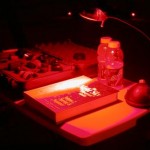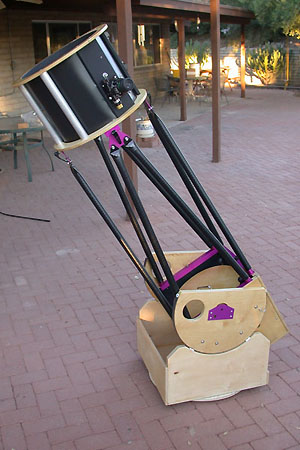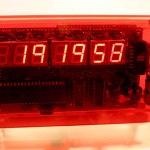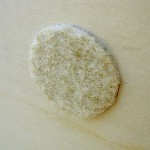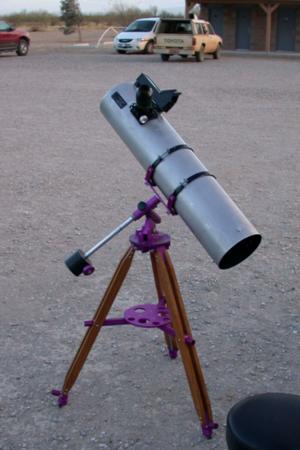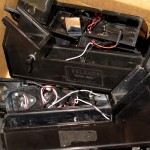In April 2001 I realized a dream that had been many years in the dreaming and a year in the making, a large aperture dobsonian.
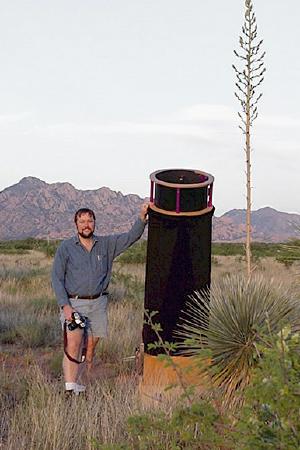
- The scope had to have sufficient aperture to take advantage of the dark skies available near Tucson. I wanted to see spiral arms in galaxies.
- The design was to be visual only. No drives, but provisions for an equatorial platform at a later date.
- The mount would be a no compromise rigid structure, capable of allowing good optics to perform at their best.
- The scope had to fit through a standard doorway.
- The scope had to fit in the cargo compartment of a Ford Explorer Sport without dropping the seat for safety during transport.
- The eyepiece must not be an excessive distance above the ground, allowing use while standing on the ground much of the time. (But then, I’m 6’2″ tall)
Over a decade of engineering experience has taught me that a well defined set of specifications can make all the difference at the end of a project. With these design goals in mind the plan then progressed rapidly.

